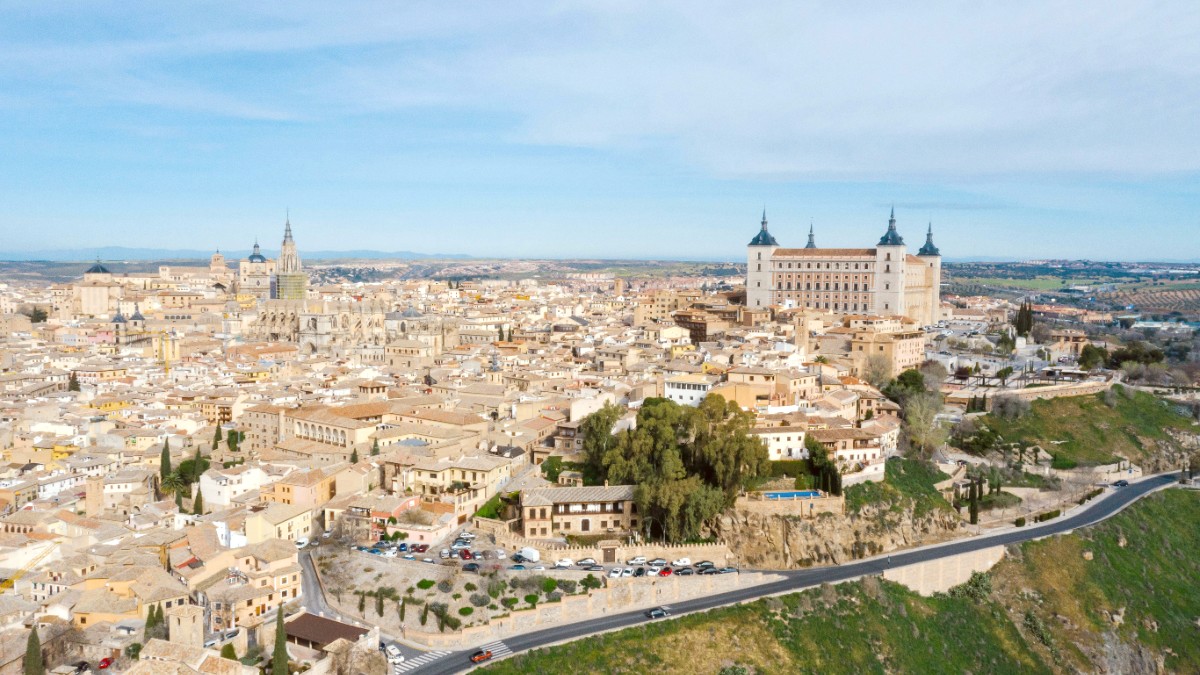
Castilla La Mancha, Spain
Toledo’s cuisine is a rich blend of Christian, Jewish, and Muslim influences, reflecting centuries of coexistence. Historically, the city flourished as a melting pot of culinary traditions.
The region of Castilla-La Mancha is known for its game meats, hearty stews, and traditional sweets. Its pastoral heritage also brings a strong focus on sheep's milk products, most notably Manchego cheese. Saffron, a prized spice, also originates from this region. This deep history presents dining in Toledo as a cultural experience.
Game meats feature prominently, including deer (venado), partridge (perdiz), wild boar (jabalí), and quail (codorniz). Lamb (cordero) and pork (cerdo) are also widely used.
Queso Manchego, a firm sheep's milk cheese with Protected Designation of Origin (PDO) status, is a staple. It comes in various aging stages (fresco, semicurado, curado, viejo).
Saffron (azafrán), grown in La Mancha, adds color and flavor to many dishes. Garlic (ajo), paprika (pimentón), and bay leaf (laurel) are common aromatics. Olive oil forms the base. Marzipan (Mazapán), made from almonds and sugar, is Toledo’s signature sweet.
A classic Toledo stew. Made with tender pork, peas, and a rich tomato sauce, often with a hint of spice. It serves well as a tapa or a main dish.
Find it in traditional Toledo bars and restaurants, like Bar Ludeña, a famous spot for this dish.
Partridge Toledo-style: Partridge stewed with garlic, onions, bay leaf, and white wine. A traditional game dish.
Often found in more traditional or upscale restaurants. It presents a rich, savory flavor.
Roast Lamb / Roast Suckling Pig. Popular throughout Castilla-La Mancha. The meat is slow-roasted until tender on the inside and crispy on the outside.
Many traditional restaurants offer these substantial dishes.
Wines from Castilla-La Mancha, notably red wines, offer a good pairing for the local cuisine. The region boasts a vast wine-producing area.
Cerveza (Beer): Local and national brands (e.g., Mahou, Cruzcampo) are widely available. Order a "caña" for a small draft beer. Agua de Toledo: A non-alcoholic, refreshing drink sometimes offered. Mosto: Non-alcoholic grape juice.
Experience elevated Spanish cuisine in sophisticated settings.
A balance of quality, ambiance, and affordability for a satisfying meal.
Affordable options for quick bites and local flavors.
While traditional Toledan cuisine leans heavily on meat, vegetarian options are common. Many restaurants offer salads, vegetable dishes (verduras), or Spanish omelets (tortilla de patatas). Vegan options can be more challenging but are increasingly available in larger or more modern establishments.
Clearly communicate your needs. Look for "sin carne" (without meat) or "vegano" (vegan) on menus. Use apps like HappyCow.
Awareness of gluten-free (sin gluten) and other allergens grows. Major restaurants generally accommodate, but communicate your needs clearly. Carry a Translation card with your dietary restrictions in Spanish. Halal or Kosher dining options are limited.
Research specific restaurants in advance or prepare your own meals from supermarkets if these dietary requirements are strict.
Learn traditional Toledan or Castilian cuisine. Search "Toledo cooking class" online.
Walking food tours focused on tapas culture and history. A great way to sample dishes. GetYourGuide offers various options.
Visit olive oil mills or saffron farms in Castilla-La Mancha as a day trip. Taste Queso Manchego at producers.
Restaurants with terraces offer stunning panoramic views of the city, especially Parador de Toledo at sunset.
During religious festivals (e.g., Easter, Christmas), specific pastries or dishes might appear in bakeries or special markets. These often carry historical or religious significance.
Explore local bakeries during these times for unique treats.
Beyond mazapán, local bakeries offer a range of traditional Spanish pastries, perfect for a mid-morning snack or dessert.
Look for 'pastelerías' or 'confiterías' throughout the city.
Tapas are more than food; they are a social ritual. Move between bars, sampling different small plates and drinks. Many bars will give a complimentary tapa with your drink order.
Spanish meal times are later than in many other countries. Lunch is the main meal (2:00 PM - 4:00 PM), and dinner typically starts after 9:00 PM. Many restaurants offer a "Menú del Día" for lunch, which is a fixed-price, multi-course meal at a good value.
Local companies offer walking food tours focused on Toledo’s tapas culture and history.
Some traditional bakeries or specialized shops might offer short demonstrations or classes on making traditional Toledo marzipan.
Opportunities exist to visit olive oil mills or saffron farms in the wider Castilla-La Mancha region. Organize these as a day trip from Toledo.
Toledo is not specifically known for major food festivals dedicated solely to gastronomy, but local produce markets and seasonal events may occur throughout the year.
These provide opportunities to taste regional specialties.
In autumn, the surrounding region celebrates grape and olive harvests, which can involve local tastings and small-scale events.
Check local tourism offices for dates and locations of these seasonal celebrations.
Always try the local specialty, Mazapán, from a traditional bakery like Santo Tomé.
Consider a 'Menú del Día' for excellent lunch value, typically a multi-course meal.
Embrace Spanish meal times, dining later than usual, especially for dinner starting after 9:00 PM.
To make the most of your culinary journey in Toledo: